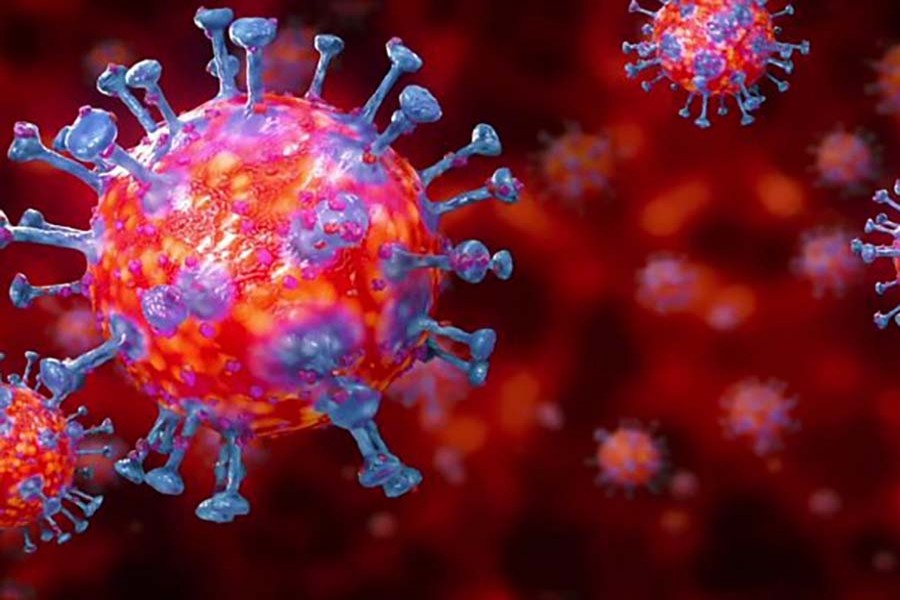The Covid-19 pandemic has caused the most severe disruptions to the global sporting calendar since the World War II. Sports events have been indiscriminately cancelled or postponed across the globe, including the 2020 Summer Olympics in Tokyo, now rescheduled for July-August 2021.
Even where some outdoor games have been restarted since May-June, no spectators are allowed to watch those in stadiums. These included the re-launched European football leagues, the cricket test series between England and West Indies, ODIs between Ireland and England, Pakistan versus England test series, motorsport, golf, and baseball championships.
Bangladesh is also planning to open up the sporting arena in a limited manner from September.
As claimed by the United Nations Department of Economic and Social Affairs (UNDESA), sport is a major contributor to socio-economic growth. The UN-declared 2030 Agenda for Sustainable Development Goals (SDGs) also recognise "the contribution sports make to the empowerment of women and young people, individuals and communities, as well as to health, education and social inclusion objectives". Following the onset of Covid-19, the UNDESA published a policy brief in May highlighting the challenges posed by the disease, both to the sporting world and to people's wellbeing and physical pursuits. It also put forward recommendations to governments and other stakeholders for safe reopening of sports events, as well as for supporting physical activities during and beyond the pandemic.
The global value of the sports industry is estimated to be US$756 billion. But major sporting events at global, regional or national levels postponed or cancelled following the outbreak of Covid-19 ranged from T-20 cricket world championship to continental football tournaments, athletics championships to marathons and wrestling events. Many sports-related jobs are therefore at risk globally - not only the professionals, but also those engaged in retail sales and sporting services linked to events that involve travel, tourism, infrastructure, catering and the media.
Sport has long been considered to be a precious tool for fostering communications and building bridges between communities and generations. Therefore, besides economic repercussions, the cancelled games have negatively impacted many potential social benefits from international and regional events, as they could have promoted social cohesion and contributed towards emotional satisfaction of fans in addition to acting as catalysts for enhanced sporting pursuits. The closures of educational institutions due to novel coronavirus have also adversely affected the sports education sector.
As many individuals are unable to actively participate in regular individual or group games, they tend to be less active physically, and embrace longer screen-times alongside irregular sleeping patterns. Less nutritious diets result in weight-gains as well as loss of physical fitness. The WHO prescribes 150 minutes of moderate intensity or 75 minutes of vigorous-intensity physical activity per week. Such periodic exercises are found to be helpful, especially in times of crises, worries and fear. On the other hand, lack of regular sports or exercises may weaken the immune system and overall physical health of citizens.
The sporting communities have however adapted by creating online contents tailored to the needs of different categories of people. These include free tutorials on the social media with themes ranging from stretching to meditation, yoga to dance classes. Many of the online courses do not require special equipment, and some even utilise everyday household objects in place of weights, tools and gear. Some organisations have also resorted to virtual training for sportsmen or sportswomen of different disciplines. However, access to such trainings, classes or resources has not been universal due to dearth of availability of digital technologies among the poorer communities.
The Centres for Disease Control and Prevention (CDC) of the USA have issued guidelines on how the sports organisations can protect the players, families and communities, and slow the spread of the pandemic based on practicality and acceptability by tailoring to the needs of communities having unique needs and circumstances. It calibrated the risks associated with different types of sports as follows: Lowest risk: Performing skill-building drills or conditioning at home, alone or with family-members; Increasing risk: Team-based practice; More risk: Within-team competition; Even more risk: Full competition between teams from the same local geographic area; Highest risk: Full competition between teams from different geographical areas.
According to CDC, if organisations are unable to maintain safety measures like social distancing during competition, they should drop down to a lower level and limit participation to within-team competition only. Similarly, if they are unable to maintain safety measures during team-based activities, they should opt for individual or at-home exercises.
The CDC says, the risks of the disease spreading in any sport may be assessed based on the following criteria: Physical closeness of players and the length of time the players or staffs are close to each other; amount of necessary touching of shared equipment and gear; ability to engage in social distancing while not engaged in play; age of the players; players at high risk of developing serious illness; size of the team; non-essential visitors, spectators and volunteers; travel outside the community. All these risks can be reduced through limiting or curtailment measures.
The CDC recommends some measures for promoting behaviours that reduce spread of Covid-19. These are: staying at home when appropriate; hand hygiene and respiratory etiquette; cloth-face coverings; adequate supplies; and applying visible signs and messages. A healthy environment can be maintained through: cleaning and disinfecting shared objects; ventilation; ensuring safety of water systems after shutdowns; modified layouts to facilitate social distancing; providing physical barriers and guides; and limiting community spaces.
The sports authorities of Bangladesh should remember that healthy operations can be maintained by protecting players and staff members at higher risk of illness; regulatory awareness; identifying small groups and keeping them together; staggered scheduling; avoiding spectators and travels; designating Covid-19 point-of-contact; maintaining communication systems; flexible time-off policies; maintaining back-up staffing plan; conducting training for staffs; recognising signs and symptoms; sharing facilities by following guidelines; and extending support towards coping and resilience.
Dr. Helal Uddin Ahmed is a retired Additional Secretary and former Editor of Bangladesh Quarterly.


